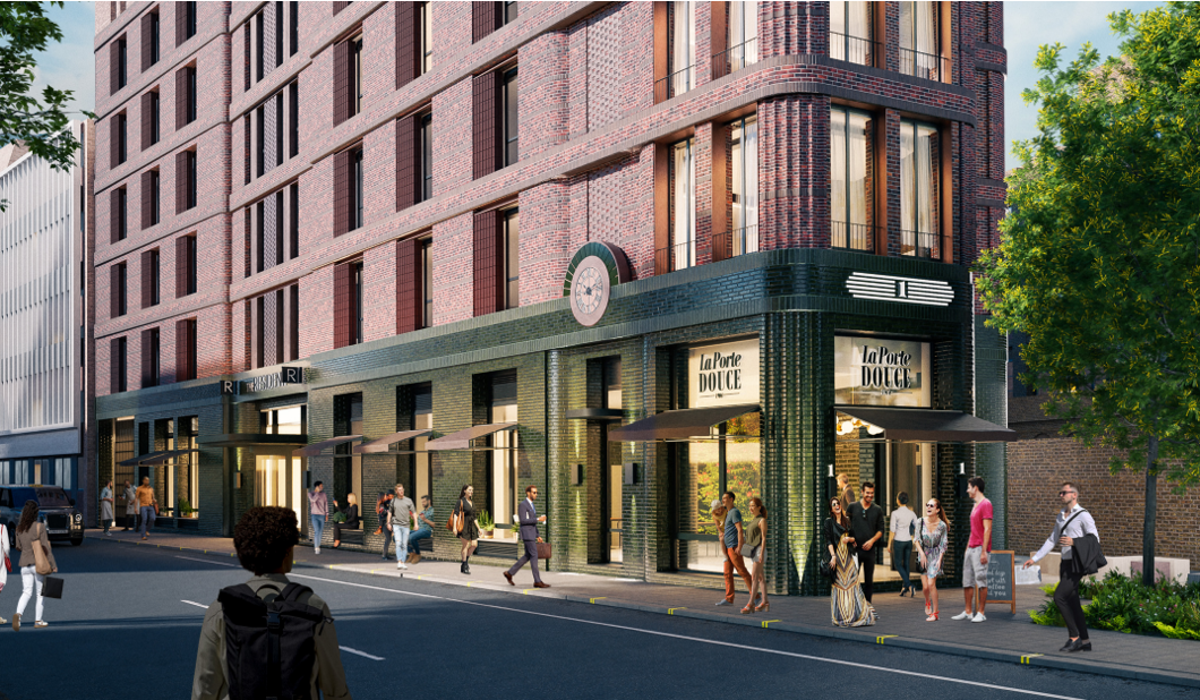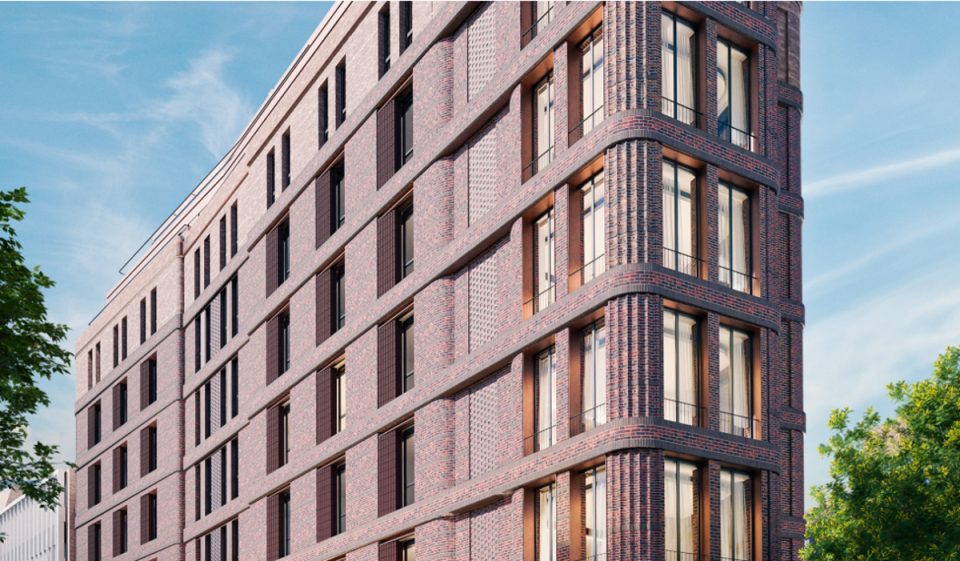Upscale 128-room hotel to replace office blocks between Museum of London and Barbican

Two office buildings in between the Barbican and the new Museum of London site are set to be demolished and replaced with an upscale 128-room hotel.
To become part of the hotel chain The Resident, the site will also include retail space at its ground floor and a new pocket park.
Buildings at 1-8 Long Lane will be combined and developed into a single, nine-storey hotel to help accommodate a growing number of visitors and tourists to the Square Mile.
According to the Greater London Authority’s London Plan, an additional 58,000 bedrooms of serviced accommodation will be needed across the capital by 2041.

Permission was previously granted in 2021 to knock down the current buildings and erect office and retail space. The latest proposal is an extension on that consented scheme, with the increased massing among the changes.
The City of London Corporation’s Planning Applications Sub-Committee this week gave the new plans the green light.
Concerns had been raised during the consultation phase including the increased size of the proposal, its impacts on daylight and sunlight on nearby residents, and pedestrian and cycling safety, due to the expected increase in local traffic.
At Tuesday’s meeting, local resident Peter Golob, representing Charterhouse Square, Haynes Street and the Barbican Association, queried the applicant’s claims on areas including daylight and sunlight and the visibility of the hotel.
“Our own small sampling of the original [daylight and sunlight] report disclosed enough errors to pose the question, who is identifying the errors we have not found?” he asked.
One such issue, he said, was that the authors of the report did not initially realise there was a school to the south side of Charterhouse Square until pointed out by some of the objectors.
Mr Golob added the lack of any identified drop off points for customers visiting the hotel posed a problem.
“The planners have agreed there are no dropping off points, and therefore have proposed unidentified nearby locations should be provided for dropping off. As long as those places remain unidentified, you have a problem or future abuse of the policy. It’s unworkable.”

The applicant acknowledged it had not initially factored the school in its report, though refuted Mr Golob’s claims its data was inaccurate.
Closing the item, Mr Joshi said he was “very confident” in the planning team managing the conditions and business plan for schemes such as this.
“I’m very confident that the application in front of us is something we should support,” he said, praising the café element of the proposal and the benefit of the hotel to nearby amenities.
“I think the pocket park in the front of the building is an excellent public amenity and I think it will enhance the value of the area greatly. So overall I’m in support of this.”
The scheme was approved by the committee, with 11 in favour and five opposing.


